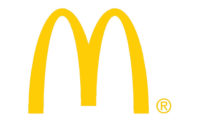Fast food ain’t what it used to be. At least that’s what McDonald’s® wants you to believe after taking out a full-page, four-color advertisement in The New York Times in August. How many businesses announce a culture change, a change in values, in an ad in The New York Times? When you’re in the retail business, the hyper-competitive food dining business and your old brand and image carries a lot of baggage, as in an unhealthy menu, well, it makes sense to blast out your new culture and values.
McDonald’s has eliminated artificial preservatives in the iconic Chicken McNuggets, and also in breakfast items including pork sausage patties, omelet-style eggs and scrambled eggs. New buns hit Mickey D restaurants in August that no longer have high fructose corn syrup, including the buns for Big Mac and McChicken sandwiches.
Catalyst for change
Of course many organizations change their culture, “the way things are done around here,” often in reaction to bad news. It might be a catastrophic fire, a multiple fatality incident, or abuses and cover-ups in global supply chains. Or precariously declining sales and profits. In Mickey D’s case, change comes after customers increasingly took their appetites to supposedly more healthy and natural style competitors such as Panera Bread, Zoup!, Wegman’s and Whole Foods. And Mickey D’s could use a sales jolt after reporting a weaker-than-expected second quarter in July.
When culture change is talked about in safety circles, where culture chatter is constant, you seldom hear anything about selling and marketing the new culture. You should. Pros and their organizations should give more thought to how to market culture and values to employees and external stakeholders. McDonald’s ad in The Times might be exhibit A.
“At McDonald’s, we’re on a journey” is the headline of the ad. How many times in safety do we hear that culture change is a journey? “We’re on a journey to zero” etc., etc., etc. Of course the McD’s headline lettering is colored green – the healthy color. The deck of the headline reads, “What’s important to you is important to us.” Again, they could be talking about safety. Safety’s important to you and it’s important to us -- this company.
The ad copy starts off saying, “We’re taking steps to ensure the food we’re proud of is food you love, and feel good eating. All while introducing new tastes and ingredients that can make the entire food industry better.”
Parallels to safety culture change
Every culture change “takes steps to ensure…” Every culture change is done to make employees (and/or customers) proud. Every culture change introduces new things, new ways, new values. And as can happen in occupational safety and health, if a benchmark company invests heavily to improve its culture, it can raise the bar for safety and health for an entire industry. See the chemical industry, the pharmaceutical industry, and how five-star rated hospitals are raising the bar for patient safety and better clinical outcomes in healthcare.
The Mickey D’s ad goes on to say, “We’re working hard to improve every day. Why? Because it’s the right thing to do, and we care about your changing needs.”
Any serious culture change endeavor is a hard slog. It’s a day-by-day process – or “journey.” And again, McDonald’s might as well be talking about safety when saying “it’s the right thing to do.” Anything that can improve health (by changing food menus or starting health-promoting wellness programs) is the right thing to do.
Culture change akin to what McDonald’s is going through should be talked about, explained, communicated, and marketed (aka sold). The Times ad is about selling culture change, selling new values. And for selling to be effective, it needs to be transparent. Tell people what is changing about the organization, go into details, and explain why a new culture is important.
McDonald’s culture change comes with goals, as do most change initiatives: the company wants to serve only cage-free eggs by 2025. Five, ten years ago were you even thinking about “cage-free eggs”? Business cultures (which of course include safety and health and the environment) must keep up with the times, too.
The ad concludes saying, “There’s still more do to. Our journey isn’t over, because we’re always striving to be better. It’s our heritage and our promise to you…”
Again, the ad copy could be talking about safety and health at work. How many times in safety do you hear people saying, “The journey is never over…” “We’re always striving to be better…”?
Going public
Explicit in McDonald’s announcement of paradigm-shifting change is the fact that the company is making a public pledge and commitment. Culture change needs that kind of reinforcement. Commitments made in public (and you can’t get much more public that a full-page ad on page A5 in The New York Times) are harder to go back on. Just ask ISHN’s resident psychologist Dr. E. Scott Geller – he’s been preaching this for decades.
I have seen this sort of marketing of a culture – as it relates to safety -- in the program of the annual conference of the Voluntary Protection Program Participants Association (VPPPA). Full-page, full-color advertisements are paid for by companies heavily invested in the VPP. These ads sell culture, reputation, brand, pride and values that revolve around VPP best practices. How a commitment to safety makes the company best in class.
If you’ve got a culture and values you’re proud of, best in class safety and health performance, do some sales and marketing. Shout it out to your workforce, your executive suite, your temps and contractors, your partners and suppliers, stockholders, competitors, and others with a stake in your business.






